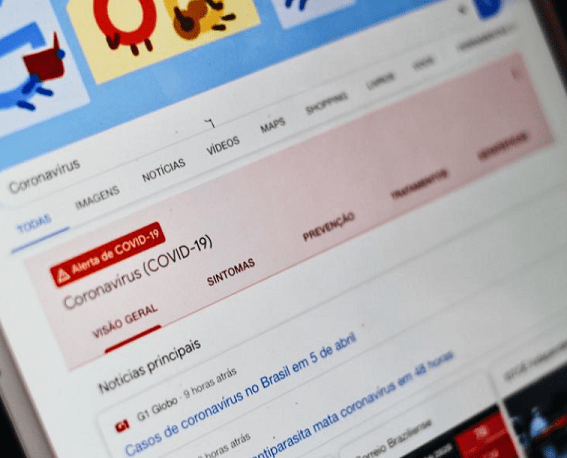By Nate Nead
The more specific your message is, the greater impact it will have on your intended audience. Here’s why.
As an entrepreneur or business owner, it’s easy to think your marketing salvation lies in the next quick tip or hack. You think to yourself, “If I just have the right tool, script or template, I can start winning.” But in reality, quick hacks only get you so far without the right marketing strategy or framework in place. You need a system to put them into, otherwise it’s nothing more than a mismatched collection of random techniques.
In building a marketing framework for your business, it’s important that you have a firm understanding of what makes successful marketing. And in this article, I’m going to discuss what I believe to be one of the defining pillars: specificity.
The “what” and “why” of specificity in marketing
If you’ve been around the marketing world much, or if you’ve taken a business class in the past couple of decades, then you’re probably familiar with the AIDA marketing principles. It’s an acronym that stands for Attention → Interest → Desire → Action. In order to move people through a sales funnel, you have to first grab their attention, then get them interested, then create desire, and finally, take action.
Most business owners and marketers focus on the “action” piece of the puzzle, but they ignore the “attention” component. The reality is that if you don’t grab a prospect’s attention — which is increasingly difficult to do in today’s noisy marketing landscape — you’ll never have the opportunity to move them to action.
The question is, how do you grab attention? While there are numerous ways to get a prospect’s attention, being specific with your messaging is a must. Here are some of the other benefits of emphasizing specificity:
- Builds credibility: When your messaging is specific, prospects start to realize that you’re an expert in helping people like them. This enhances your credibility and gives you the perception of being the go-to business, product or service.
- Persuades: Specificity typically involves the use of proof, data and statistics. As a result, your messaging is more clear and persuasive.
- Increases conversion rates: Studies show that something as simple as optimizing your headline to be more specific can boost conversion rates. This holds true regardless of the industry or niche.
Unfortunately, most brands take a generic approach. In doing so, they miss out on the opportunity to grab attention and move people through their conversion funnels. If you can avoid this mistake, you can dramatically increase your chances of being successful.
The goal of successful marketing is to deliver the right message to the right person at the right time. Here are four ways you can leverage the power of specificity to accomplish this:
1. Choose a specific niche
If you’re targeting everyone, you’re targeting no one in particular. With very few exceptions, it’s usually a bad idea to go after anyone and everyone. Unless you’re selling toothpaste, bananas or batteries, you’re better off picking a target audience and pursuing them.
When you have a niche, it becomes easier to tailor your messaging. You no longer have to account for everyone. You can get into the mind of your prospect and start pressing into specific desires, frustrations, pain points and goals.
2. Create a USP
With a niche in mind, develop a Unique Sales Proposition (USP) that clearly conveys how you help your target audience achieve their desires and overcome their pain points.
A good USP follows this formula: “I help [NICHE] achieve [DESIRE] without [PAIN POINT].” You don’t have to follow this script word for word, but it gives you a good general feel for which elements need to be included.
3. Death to the stock photo
If you’re still using stock photos on your website and in your marketing messages, please stop! Stock photos scream “generic” louder than almost anything else. It doesn’t cost that much to have professional pictures taken or to create your own graphics using a tool like Canva.com.
You can give your entire website a makeover by simply hiring a professional photographer to come out to your business for three or four hours one day and take pictures. Swap out stock photos with images of actual team members and customers. It’ll change the entire look of your website.
4. Improve your headlines
Finally, write better headlines. Research from Marketing Experiments shows that optimizing your headlines for greater specificity can improve your conversion rate by 73% or more. In the study, researchers tested the following five headlines against a control headline:
- Dental Plans for $8.33 a month. Acceptance Guaranteed.
- Over 55,000 Dental Care Providers. Acceptance Guaranteed.
- Dental Care Coverage. Best Price Guaranteed.
- Low Cost Dental Care for the Uninsured.
- Best Price Dental Care – Without Insurance.
Guess which headlines performed the best? Headline 1 showed a lift of 72.76% in conversions, while Headline 2 got a bump of 26.41%. The other three headlines all had a negative impact on conversions.
The moral of the story is to get specific with headlines. Whether it’s numbers, descriptive adjectives or compelling verbs, specificity sells!
Nobody likes generic marketing. If a prospect sees your marketing messages and doesn’t immediately think it’s intended for them, you have a problem. Get crystal clear on who your audience is, and then make a point to tailor every element of your marketing campaign to them.


